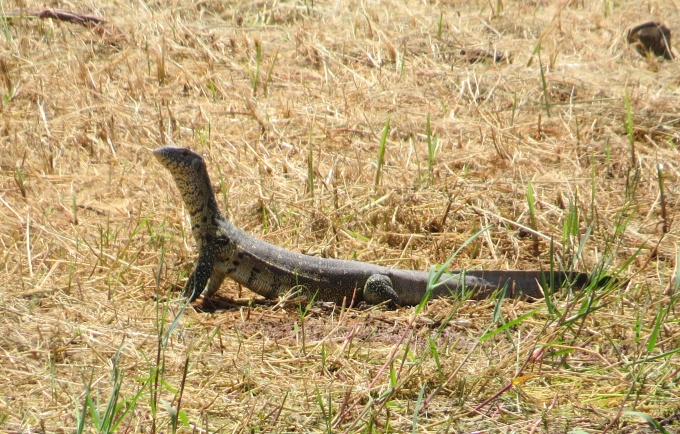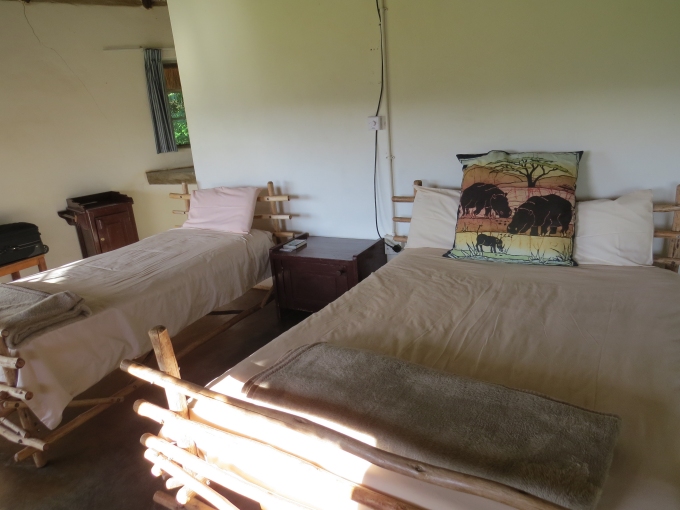Across the Border to the Kingdom of Swaziland
/Swaziland? Where the heck is that? Get out your world globe or atlas to find us. After a wonderful night in our upscale chalet at the Shayamoya Lodge and a leisurely breakfast on the lodge patio the next morning, we headed north to the border towns of Golela and Lavumisa, to cross into Swaziland. “Why Swaziland?”, you ask. Well, because it's there, nestled between South Africa and Mozambique, and it's close and it sounded interesting when I read about it first in the Lonely Planet and then subsequently did my internet research.

The border crossing was easy enough. It was only 10km (6 miles) away. We stopped at South African Customs/Immigration for clearing out of the country. They stamped our passports and we drove a few hundred feet to the Swaziland Immigration/Customs offices to clear in. They asked no questions. They stamped our passports. We paid our R50 and voilá … we were visitors in the Kingdom of Swaziland.
We stopped at Nisela Safaris for lunch. It looked quite commercial, and it was, but it was the only place we saw for miles and we were hungry. Lunch was served on a patio overlooking a man-made waterhole. A sign warned of crocs, but we didn't see any. There were lots of birds and I spotted a meter-long water monitor lizard sunning himself on the shore.
The southeast part of the country is mostly agricultural with never-ending, undulating fields devoted to corn and sugar cane. At Big Bend (doesn't sound very Swazi, does it?), we spotted a sugar-processing mill along side the highway with heavy vehicle turnoffs, probably for cane trucks.
Swaziland, or just Swazi as locals call it, is a little country with a population of ~1 million people. We traveled north on the MR8, then west on the MR3, heading towards the Mlilwane Wildlife Sanctuary. We weren't sure what to expect, but the roads were well-paved highways with the usual cows milling along the side to add a bit of excitement to the driving experience. The houses were not so different than the Zulu thatched huts we'd seen in South Africa.
We passed through Manzini, an unexpectedly modern small city with seemingly large stores and supermarkets and a 4-lane divided highway. We took the turn-off for Mlilwane Wildlife Sanctuary and soon saw signs that we were getting close. Another turn-off onto a gravel road and a few kilometers more, and we were welcomed into the park.
We hadn't progressed more than a few meters past the cattle guard inside the entry gate when we saw a bontebok lazing in the grass and impala relaxing in the middle of the road before us. A little further up and there were zebras on one side of us and bonteboks on the other. This park had lots of potential.
We could see a tall, orange mound just up ahead and recognized it as a huge termite hill. It's a protected mound, growing and thriving, its inhabitants providing food for several of the park's animals.
We arrived at the Reception area after a few minutes where we picked up a map and paid our fees. Continuing on the rough, gravel road, we saw a sign advising us against fish poaching and another warning us to stay away from the water's edge because of crocodiles. As we crossed a tiny bridge just beyond the sign, we stopped to check out the water's edge. Sure enough … there was a croc just lying in wait. Our first ever sighting of a croc in the wild and this seemed to be the best viewing distance.
We passed through one rest camp and saw signs for Sandzela Backpackers … a high-end game lodge one night, a rustic backpackers the next. Up a hill, around ruts and potholes, through a mini-stream and we saw the huts of the backpackers' lodge. Vusi greeted us and showed us around the main building, showers/toilets, swimming pool (wow!), braai area and then took us to our little secluded hut a few hundred feet away from the main camp.
We were positively delighted with the accommodations. Though minimal and rustic, the hut was clean and tidy with two beds (one was a double bed … hooray!), an overhead fan and light, and a sink with cold-running water. There was a Dutch entry-door and Vusi explained that we should keep the bottom closed at all times … warthogs like to explore!
We lugged our stuff to the hut and relaxed awhile. When we heard the “dinner drums”, we joined a French couple and an Italian fellow at a long picnic table in the open braai area. We enjoyed a supper of chicken stew with rice and salad served camp style Monkeys were chattering nearby. Birds were chirping their dusk songs. Insects buzzed and flitted by.
We made our way back to our little hut just as darkness fell. We heard the night sounds of animals nearby for awhile and then all was quiet and the camp slept.












